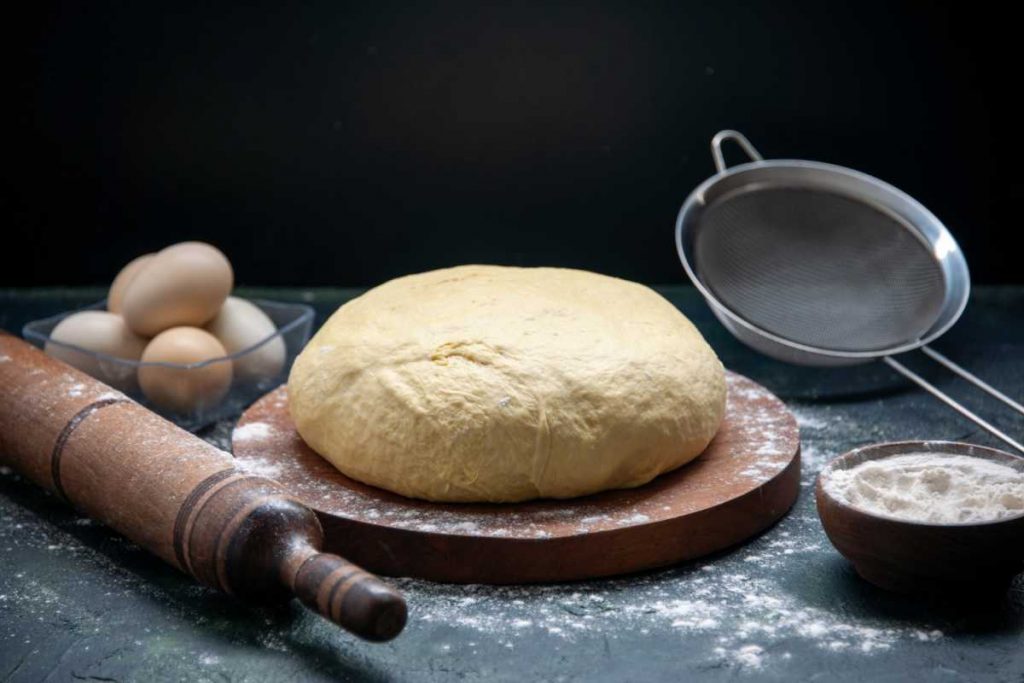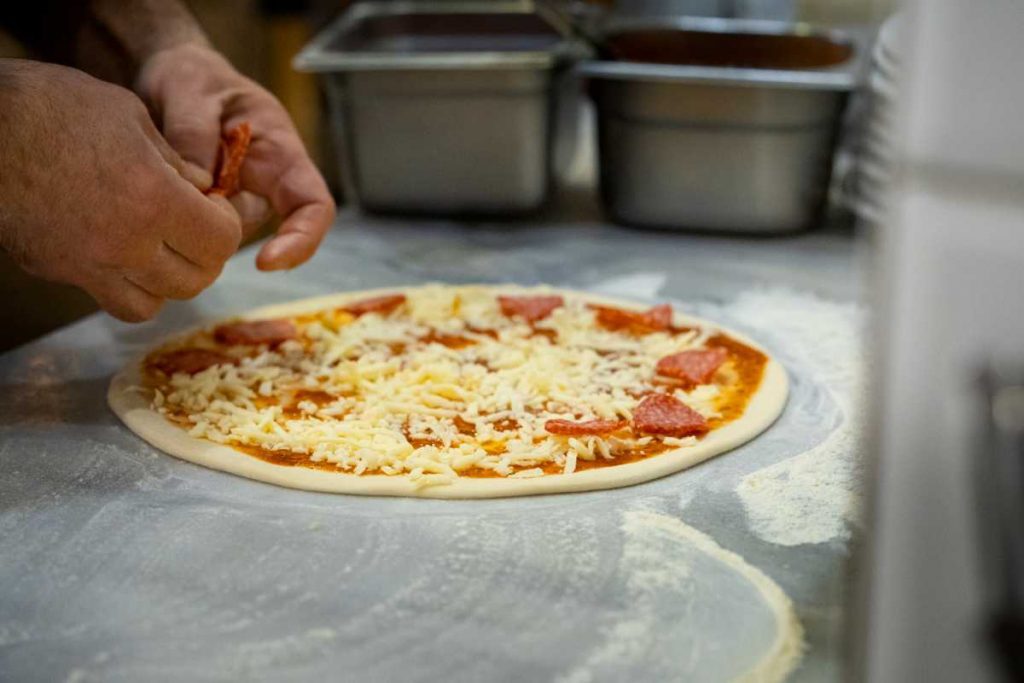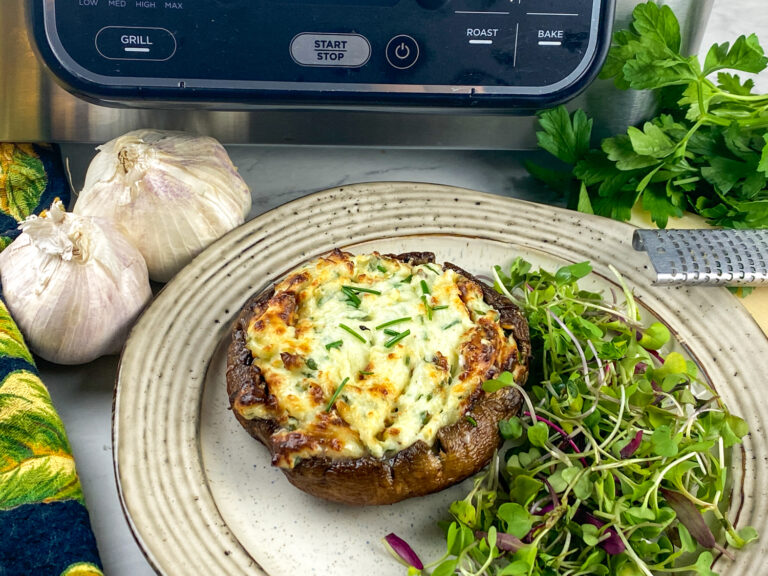How to Make The Perfect Pizza Dough
Are you a pizza lover who wants to try making your own pizza dough at home? Look no further! In this article, we will guide you through the process of making delicious pizza dough from scratch. Whether you prefer thin and crispy crusts or thick and chewy ones, we’ve got you covered. So, let us roll up those sleeves and get to work.
Pizza is a popular meal eaten by people all over the world. The key to a great pizza lies in its dough. Making your own pizza dough allows you to customize the crust to your liking and experiment with different flavors. Plus, the satisfaction of creating a pizza from scratch is truly rewarding. So, let’s dive into the process of making pizza dough!

Ingredients to Make Pizza Dough
To make pizza dough, you will need the following ingredients:
- 2 ¼ cups all-purpose flour
- 1 teaspoon instant yeast
- 1 teaspoon sugar
- 1 teaspoon salt
- 1 cup warm water
- 2 tablespoons olive oil

Equipment Needed to Make Pizza Dough
Before you start, gather the necessary equipment:
- Mixing bowl
- Measuring cups and spoons
- Wooden spoon or spatula
- Kitchen towel or plastic wrap
- Rolling pin
- Baking sheet or pizza stone
- Oven
Directions
If you follow these directions, you can make the perfect pizza dough every time. Make sure you don’t miss any step.
Step 1: Proofing the Yeast
Combine the warm water, instant yeast, and sugar in a small mixing bowl. Stir gently to dissolve the yeast and let it sit for about 5 minutes until the mixture becomes frothy. This process is called proofing the yeast and ensures that it’s active and ready to leaven the dough.
Step 2: Mixing the Pizza Dough
In a large mixing bowl, combine the all-purpose flour and salt. Make a well in the center and pour in the proofed yeast mixture and olive oil. Stir the ingredients together with a wooden spoon or spatula until a shaggy dough forms.
Step 3: Kneading the Dough
Transfer the dough onto a lightly floured surface. Knead the dough for 8-10 minutes, or until it is smooth and elastic. This process helps develop the gluten in the dough, giving it structure and chewiness.

Step 4: First Rise
Place the kneaded dough in a clean, greased bowl. Cover it with a kitchen towel or plastic wrap and let it rise in a warm, draft-free area for about 1-2 hours, or until it doubles in size. This first rise allows the yeast to ferment and create air pockets, making the dough light and airy.
Step 5: Shaping the Pizza Dough
Once the dough has risen, transfer it back to a floured surface. Gently tap it to expel any air bubbles. Divide the dough into two equal portions if you want to make two pizzas. Shape it into a ball and set it aside for about 15-20 minutes to rest. This rest interval lets the gluten relax, making the dough easier to mold.
Step 6: Second Rise
After the resting period, the dough is ready for the second rise. Place each dough ball on a floured surface and cover them with a kitchen towel. Let them rise for another 30-45 minutes until they slightly puff up.

Step 7: Preparing the Pizza
Preheat your oven to the highest temperature setting. If you have a pizza stone, place it in the oven while preheating. Roll out each dough ball into a round shape, dusting with flour as needed to prevent sticking. Transfer the rolled-out dough onto a baking sheet or pizza peel if using a stone.
Step 8: Baking the Pizza
Now it’s time to bake your pizza. Toppings such as tomato sauce, cheese, veggies, or meats can be added. Carefully slide the pizza onto the preheated baking sheet or pizza stone in the oven. Bake for ten to fifteen minutes or until the crust is golden brown and the cheese melts and bubbles.
Step 9: Enjoying Your Homemade Pizza
Remove the pizza from the oven and set it aside to cool for a few minutes. Slice it into wedges and serve hot. Enjoy the delicious taste of your homemade pizza with family and friends!

Tips for Perfect Pizza Dough
Well if you use these tips you can enhance your dough.
- Use high-quality ingredients for the best results.
- Adjust the amount of yeast and rising time based on your preference for crust thickness.
- Experiment with different flours, such as whole wheat or bread flour, to add unique flavors.
- Let the dough rest in the refrigerator overnight for a more complex flavor profile.
- Don’t overload your pizza with too many toppings, as it can weigh down the crust.

Margherita Pizza Recipe
If you are looking for a home pizza recipe, why not try this Margherita Pizza Recipe? I write a detailed recipe for it. You will also explore its tips and tricks with serving suggestions and health benefits. It is the most authentic and my favorite recipe.
Troubleshooting Common Issues
- If the dough is too sticky, add a little flour while kneading.
- If the dough is too dry, add a small amount of water or olive oil.
- If the dough doesn’t rise, check the temperature of the proofing area and ensure the yeast is fresh.
Conclusion
Making pizza dough from scratch is a fun and rewarding culinary adventure. With a few simple ingredients and some patience, you can create a pizza crust that suits your taste perfectly. Whether you prefer a thin and crispy crust or a thick and chewy one, following these steps will ensure a delicious outcome every time. So, grab your apron and start making your own homemade pizza dough today!
Frequently Asked Questions
Can I use bread flour instead of all-purpose flour for pizza dough?
Yes, you can use bread flour instead of all-purpose flour. Bread flour has a higher protein content, which gives the crust a chewier texture. If you prefer a chewier crust, using bread flour is a great option.
Can I freeze the pizza dough?
Absolutely! You can freeze the pizza dough for future use. After the first rise, divide the dough into individual portions, wrap them tightly in plastic wrap or place them in freezer bags, and freeze. When you’re ready to use the dough, thaw it in the refrigerator overnight and proceed with shaping, rising, and baking.
How long does the dough need to rise?
The rising time can vary depending on factors such as room temperature and the amount of yeast used. Generally, the dough needs to rise for 1-2 hours during the first rise and 30-45 minutes during the second rise. Keep an eye on the dough and wait until it doubles in size or slightly puffs up.
Can I use active dry yeast instead of instant yeast?
Yes, you can use active dry yeast instead of instant yeast. However, active dry yeast requires proofing in warm water before using it in the dough. Dissolve the yeast in warm water with a pinch of sugar and let it sit for about 5 minutes until it becomes frothy. Then, proceed with mixing the dough as mentioned in the recipe.
Can I prepare the dough ahead of time and store it in the refrigerator overnight?
Yes, you may make the dough ahead of time and store it in the refrigerator overnight. Place in an airtight container. Cover the container tightly with plastic wrap and refrigerate overnight. The next day, let the dough come to room temperature for about 30 minutes before proceeding with shaping, rising, and baking.







